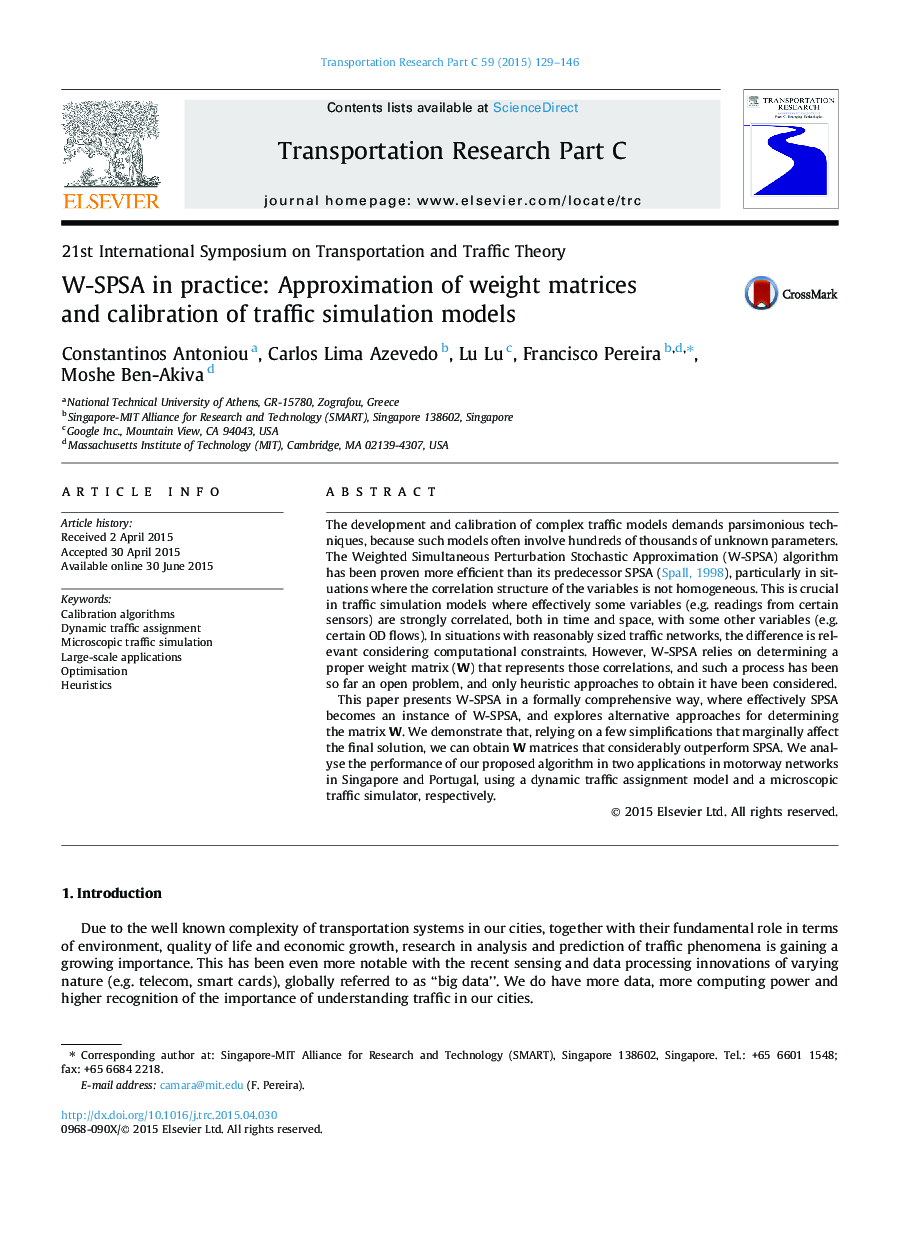| Article ID | Journal | Published Year | Pages | File Type |
|---|---|---|---|---|
| 524861 | Transportation Research Part C: Emerging Technologies | 2015 | 18 Pages |
•WSPSA algorithm extends SPSA with a weight matrix.•Weight matrix W allows representation of temporal and spatial network correlations.•A formalisation of efficient estimation of the weight matrix is presented.•Application to two large scale case studies, using microscopic and mesoscopic simulators.
The development and calibration of complex traffic models demands parsimonious techniques, because such models often involve hundreds of thousands of unknown parameters. The Weighted Simultaneous Perturbation Stochastic Approximation (W-SPSA) algorithm has been proven more efficient than its predecessor SPSA (Spall, 1998), particularly in situations where the correlation structure of the variables is not homogeneous. This is crucial in traffic simulation models where effectively some variables (e.g. readings from certain sensors) are strongly correlated, both in time and space, with some other variables (e.g. certain OD flows). In situations with reasonably sized traffic networks, the difference is relevant considering computational constraints. However, W-SPSA relies on determining a proper weight matrix (W) that represents those correlations, and such a process has been so far an open problem, and only heuristic approaches to obtain it have been considered.This paper presents W-SPSA in a formally comprehensive way, where effectively SPSA becomes an instance of W-SPSA, and explores alternative approaches for determining the matrix W. We demonstrate that, relying on a few simplifications that marginally affect the final solution, we can obtain W matrices that considerably outperform SPSA. We analyse the performance of our proposed algorithm in two applications in motorway networks in Singapore and Portugal, using a dynamic traffic assignment model and a microscopic traffic simulator, respectively.
